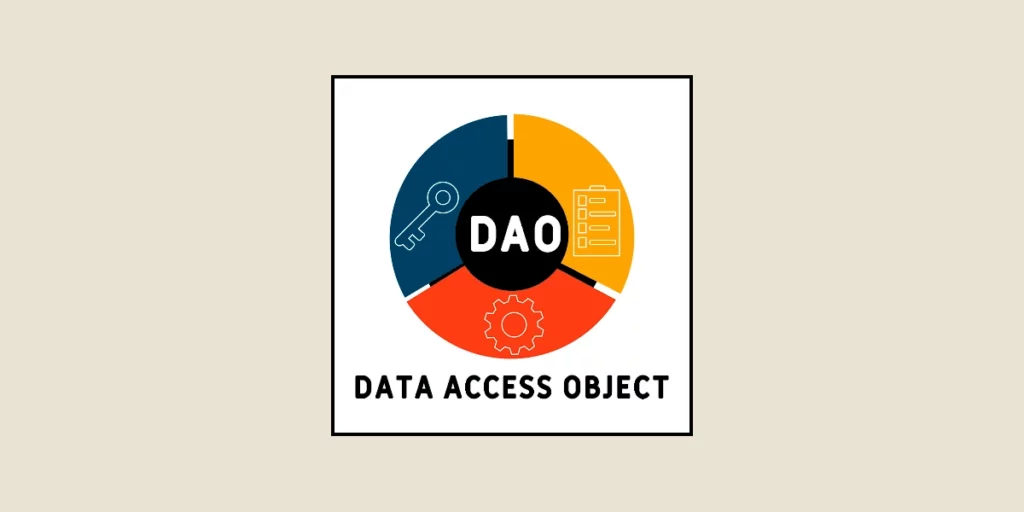The Data Access Object, or DAO, is a design pattern that facilitates the abstraction of interactions between an application and a database. Discover its functionality and learn why it remains crucial in modern architectures!
Computer applications now manage increasingly vast volumes of data. Thus, the methods for storing, accessing, and manipulating this data become vital for system performance and maintainability. However, direct database connections, though common, pose numerous challenges regarding security, flexibility, and maintenance. To address this issue, an approach is employed across various environments to streamline data access and simplify future changes: the Data Access Object or DAO.
How does the model structure and isolate data access?
This design pattern aims to separate application business logic from operations related to data persistence. Essentially, it centralizes and abstracts interactions with a database, providing a consistent interface for data manipulation without requiring the application to understand the underlying database specifics.
The DAO thus acts as an intermediary layer between the application and the database. Instead of executing SQL queries directly within the application, it invokes predefined methods.
This is what enables it to read, write, modify, or delete data. This abstraction reduces the tight coupling between the database and business logic, simplifying maintenance and evolution of the code. In multi-layered applications, where responsibility separation is crucial, the DAO integrates perfectly into the data access layer.
Hence, it allows the business layer to operate independently of technical decisions about data persistence, like database type or technology used. When an application needs to evolve to support different databases or transition from one technology to another without impacting business logic, this becomes simply essential.
This model is particularly used in environments such as Java (with JDBC or JPA) and in other object-oriented frameworks like .NET and Python with SQLAlchemy. This is because it offers a standardized and maintainable approach to managing data access.

What are the advantages of DAO?
Employing the Data Access Object provides numerous benefits, especially in multi-layered and complex software architectures. One of its major strengths is the clear distinction between business logic and data management. Methods for data persistence, such as SQL queries or database connectivity, are encapsulated in the DAO.
This allows business logic to remain independent of implementation details. This enhances code clarity and maintainability, particularly when database modifications occur. Furthermore, with a DAO, adjustments to the database (changing database type, modifying table structures, etc.) can be made without directly affecting the business layer.
For instance, if a company opts to transition from a SQL to NoSQL database, only the DAO layer requires adaptation. This minimizes error risks and maintenance expenses. Additionally, this model supports greater code portability. It eases database replacements, for example, moving from MySQL to PostgreSQL.
It also streamlines adapting the system to engage with multiple databases in parallel, ensuring the business layer remains untouched. By isolating persistence tasks in the DAO, testing business logic independently of the database becomes simpler. With the use of mocks or test doubles, developers can verify business layer behavior without relying on an actual database.
How does a Data Access Object function?
The DAO operates on a straightforward yet effective model. Database access is standardized through a series of generic or specific methods. It employs CRUD (Create, Read, Update, Delete) methods to interact with the database. Each method executes a specific query or operation on the data.
Hence, “create()” inserts new data, “read()” retrieves data under certain conditions, “update()” modifies existing data, and “delete()” removes data. These methods are outlined in the DAO interface and subsequently implemented in a concrete class that oversees database connection and query execution.
Java, Python, .NET... DAO across various environments
The Data Access Object has demonstrated its utility in numerous development environments, with each language and framework imparting its tools to implement this design pattern. In Java, it is often utilized with tools such as JDBC (Java Database Connectivity) or JPA (Java Persistence API).
With JDBC, the DAO directly manages SQL queries. This model is beneficial for simple systems necessitating precise control over database interactions, granting direct connectivity. Conversely, JPA provides a more advanced abstraction via ORM (Object-Relational Mapping). The DAO handles Java objects directly mapped to database tables, simplifying the code.

CRUD operations are streamlined via annotations and persistent entities usage. For instance, @Entity and @Id are common annotations making the DAO more intuitive and in line with object-oriented logic. In Python’s ecosystem, the SQLAlchemy framework is frequently employed to create DAOs. It offers ORM’s advantages alongside the flexibility of writing custom SQL queries.
Therefore, DAOs can manipulate Python objects and manage database connections and transactions seamlessly. CRUD methods are streamlined, making DAOs robust interfaces for interfacing with different databases without dependence on a singular implementation.
In the .NET environment, the preferred choice for implementing a Data Access Object is Entity Framework. It furnishes a robust ORM, allowing developers to work directly with .NET objects. Relational database management is simplified. DAOs crafted with this framework utilize LINQ (Language Integrated Query) to perform object queries, aligning operations more intuitively with object-oriented logic.
With increasing interest in NoSQL databases like MongoDB or Cassandra, DAOs must also adapt to non-relational data models. Although the concept remains similar, NoSQL DAOs frequently handle documents or collections instead of relational tables. They also allow for the abstraction of read/write operations.
What are the limitations of the model?
While DAO is extensively used, it does have limitations that might lead to criticism in some contexts. For very simple applications, employing a Data Access Object can introduce unnecessary complexity. Creating a distinct DAO layer can complicate management in systems where data access is minimal and changes are infrequent.
In these scenarios, more direct methods might be preferable. For instance, using Active Record might be considered. Additionally, though providing an abstraction, DAO can occasionally cause tight coupling with a specific persistence framework. For example, in a Java application using JPA, it becomes reliant on JPA entities and the underlying ORM.
Should a change of tools occur or a migration to a different persistence framework be necessary, flexibility can become constrained, presenting a problem. In light of these weaknesses, more contemporary design patterns are sometimes regarded as evolutions of DAO.
Such is the case with the Repository Pattern, which facilitates better integration with domain-oriented architectures (DDD or Domain-Driven Design). It provides a richer interface and encapsulates complex business rules.
In some environments, the Active Record pattern is favored. Here, business objects take responsibility for persisting their data, occasionally rendering the DAO redundant. Despite its effectiveness and popularity, applying DAO demands discernment based on the project’s complexity and technological environment.

What are the trends and future of the Data Access Object?
With the advent of new architectures and technological advancements, the DAO model is evolving and adapting. The surge of microservices architectures has substantially transformed data management. Each microservice often possesses its database, requiring DAOs to handle multiple connections and integrate distributed transactions.
This complicates access management but underscores the necessity for the abstraction offered by the DAO. It eases communication between different databases while maintaining a cohesive structure.
Serverless architectures are also rising in prominence, requiring DAOs to be even lighter and more responsive as they operate ephemerally. Moreover, the growing demand for real-time data processing systems, such as streaming or event-driven solutions, requires DAOs to adapt and has reshaped their implementation.
In these settings, data is no longer merely extracted statically but must be processed in real-time. For instance, databases like Apache Kafka or Redis necessitate a different approach to managing continuous data flows.
Advancements in AI and automation also affect the development of intelligent DAOs. Through artificial intelligence, certain DAOs can autonomously enhance database queries based on usage patterns and system loads.
In machine learning settings, DAOs must also handle significant volumes of complex data to support algorithms and maintain performance. With the progression of autonomous databases like Oracle Autonomous Database, DAOs might eventually automate some of their functionalities.
Query optimization, transaction management, and load distribution across multiple databases could be largely managed by intelligent systems. Another trend involves API solutions like GraphQL, which are increasingly adopted by developers. They enable greater flexibility in querying data.
To align with these modern interfaces, DAOs must provide more dynamic access points and allow clients to specify exactly what data is needed instead of adhering to a rigid querying structure.

Conclusion: Data Access Object, an essential pillar for data management
The DAO ensures a clear separation between business logic and data access, offering numerous benefits in terms of maintainability, portability, and testability. This is why it remains a fundamental design pattern for data management in various software environments, such as Python, Java, or .NET!
Despite recent technological shifts, such as microservices architectures, real-time databases, and serverless solutions, this model continues to evolve and maintains its relevance.
To master the Data Access Object, you can choose DataScientest. Our training programs will equip you with all the concepts, tools, and technologies essential for a career in Data Science.
We offer courses for Data Scientists, Data Analysts, and Data Engineers. You will also learn to handle databases, DataViz, the Python language, data analysis techniques, and Business Intelligence.
Upon course completion, you will receive a state-recognized diploma, a continuing education certificate, and a professional certification issued by our cloud provider partners such as AWS or Microsoft Azure. All our training is provided in BootCamp, continuous, or alternating formats, and our organization is eligible for funding through CPF or France Travail. Discover DataScientest!
You’re now well-versed in DAO. For further information on the topic, explore our comprehensive article on databases and our article on Data Architecture!










